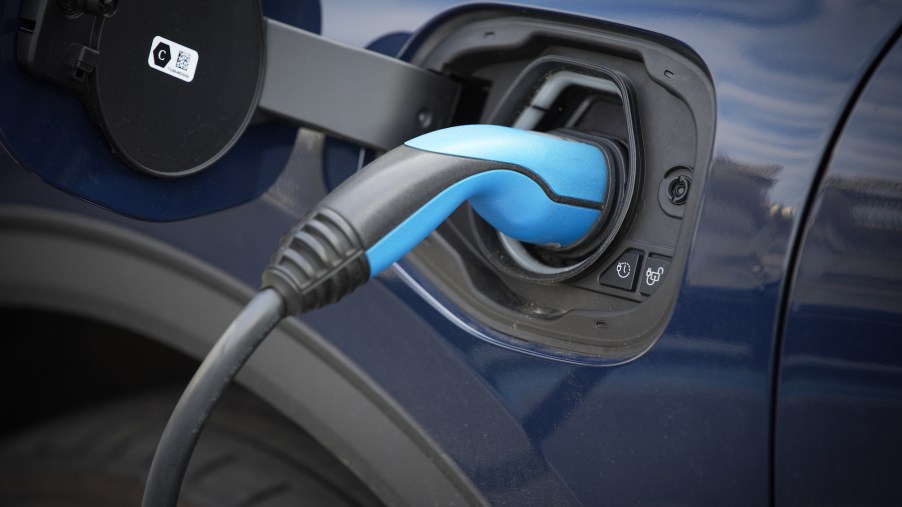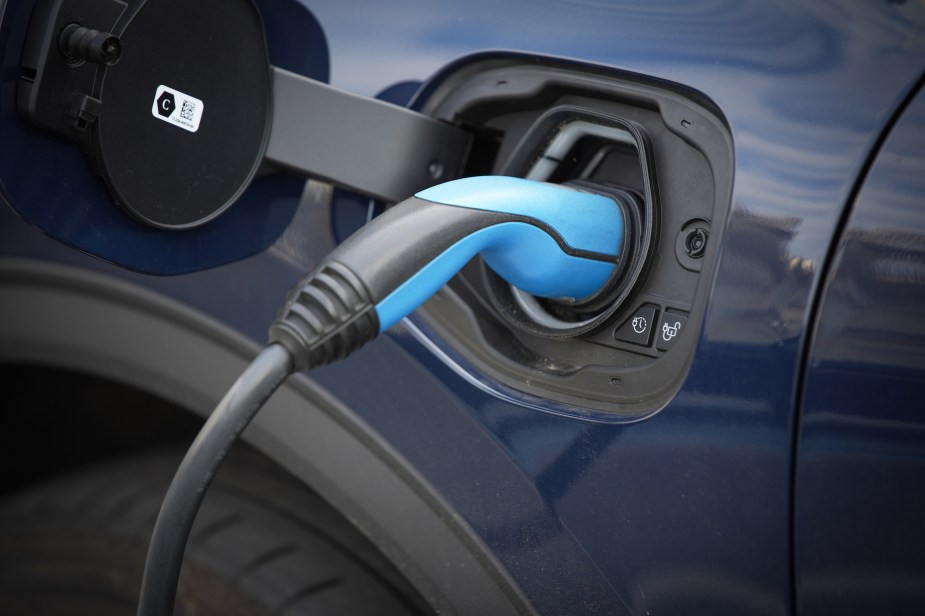
This Portable EV Charger Is the ‘Swiss Army Knife of EV Charging Technology’
Range anxiety often keeps many consumers from switching to an EV. Charging infrastructure is now prevalent in many cities. Large parts of the country don’t have charging stations. This deficit prevents prospective buyers who reside in these areas from purchasing an EV and has consumers who travel extensively throughout the country for work or pleasure thinking twice.
However, some companies have filled the void by offering capable home and portable charging systems. In fact, one of these charging systems is so capable that its manufacturer describes it as the “Swiss Army Knife of EV Charging Technology.”
What is range anxiety, and how can a portable EV charger help?

If you’re unfamiliar with the term range anxiety, it refers to a driver’s worry an electric vehicle’s battery will run out before arriving at another charging station or the destination. Range anxiety afflicts current and prospective EV owners.
In the early days of EVs, it was especially prevalent, as few public charging stations existed even in coastal cities where consumer demand for these vehicles was the highest. According to Car and Driver, the driving range of the first popular EV, the Nissan Leaf, was only 100 miles. Today’s average EV offer two-and-a-half times that.
As automotive innovations led to improved EV driving range and private companies and government stakeholders invested in building out charging infrastructure, many consumers have found their fears diminishing. The availability of home and portable charging systems has helped alleviate some concerns, especially among urban drivers who primarily use their EVs as daily drivers.
But there are still vast areas of the country where the lack of charging infrastructure, dated information about EV capabilities, and resulting range anxiety have kept EV purchases low. However, even in areas with few or no public charging stations, many EV owners could make do with the right charger. A recent Forbes profile of the J+ BOOSTER 2 suggests that it could be ideal for EV owners worried about how much juice their car has.
What is the J+ BOOSTER 2 portable EV charger?
The J+ BOOSTER 2 is a portable battery charger you can easily place in your trunk or backseat. When parked, you can connect it to your car and plug it into any outlet between 6 and 40 amps and either 120 or 240 volts. Depending on your EV’s battery size, you should be able to fully charge it in between four and six hours using a 240-volt outlet. Forbes estimates that for every hour you spend charging using a 240-volt outlet, you’ll get an additional 40 miles of range.
But the J+ BOOSTER 2 can be more than just a home charger. Add a special optional adapter, and you have a wall-mounted home charger. And if you know anything about EVs, you know that Tesla specializes in proprietary technology and accessories the company can charge you extra for.
It’s impossible to charge a Tesla with many non-Tesla EV chargers, although some can once you pay an additional fee for an adapter. But with the J+ BOOSTER 2, you get eight adaptor plugs that work well with nearly every EV on the market. Each adapter is configured to distribute appropriate charging power when you connect the unit to an outlet.
The unit is also durable, with a dust-proof military-grade casing that is resistant to damage when driven over by a vehicle weighing up to 6,600 pounds. And it can operate in temperatures as low as -22°F and as high as 122°F. It costs about the same as popular home units, such as the JuiceBox 40 or ChargePoint’s Home Flex, at $699.
Is the J+ BOOSTER 2 the best option on the market?
The J+ BOOSTER 2 is not a new product. But it is new to U.S. consumers. The unit is based on a charger known as the Juice BOOSTER 2, which has been popular in Europe for quite some time. And given Juice BOOSTER 2’s launch in Europe, the manufacturer, the Juice Group, has had time to work out the growing pains that come with new products, from technology to distribution.
The J+ BOOSTER 2 is also not the cheapest device on the market. You can find units made by companies like Lectron or Tesla that cost a couple of hundred bucks. However, most options in this range aren’t smart devices. You’ll get more useful capabilities when you look at models that start at around $400 or $500. Models like the AMPROAD iFlow P9 EV Charger Level 2 or the PRIMECOM Level 2 Electric Charger can be paired with a smartphone app, be used on the road or mounted at home, and work with a variety of vehicles.
But the J+ BOOSTER 2, with its rugged design, ability to operate in dynamic conditions, and versatility, is the best portable EV you may come across. It’s certainly worth a shot no matter which EV you own, and if you’re on the cusp of switching to an EV, buying a J+ BOOSTER 2 also should alleviate your fears.


